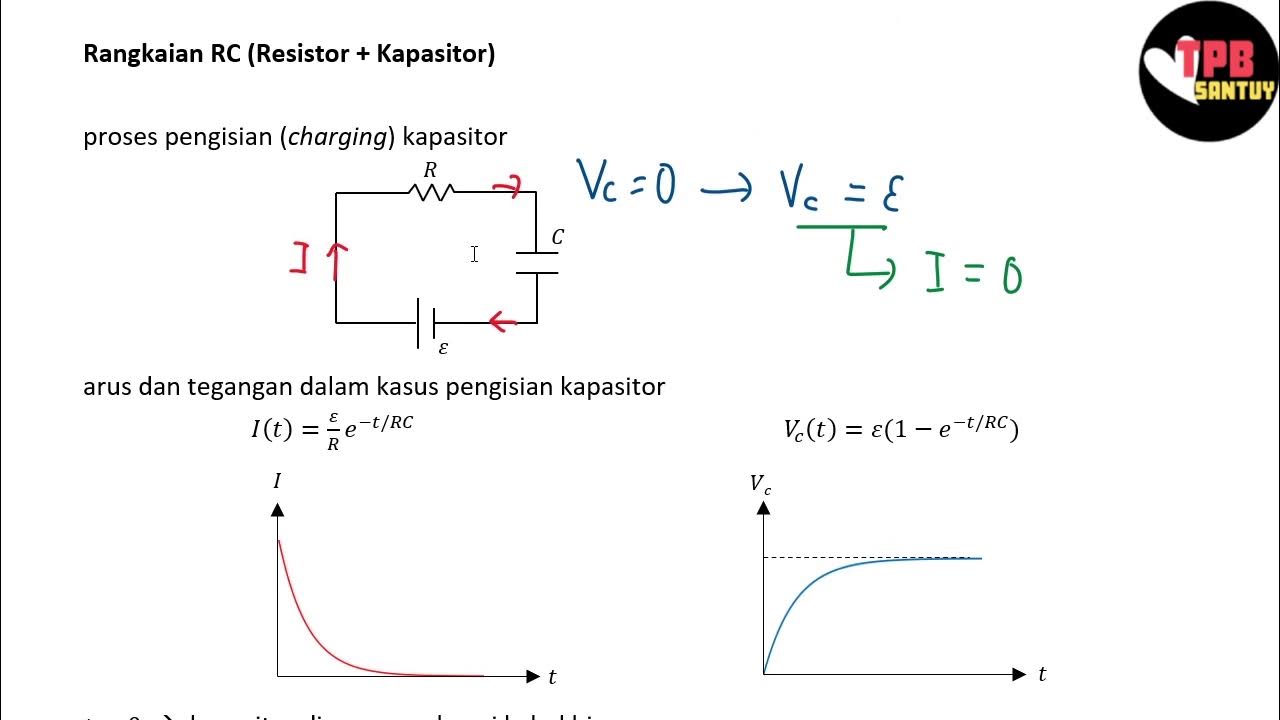Electrical Engineering: Basic Concepts (5 of 7) Voltage
Summary
TLDRThis educational video delves into the concept of voltage, illustrating it with the example of a capacitor with charged plates. It explains that voltage is the work required to move a charge against an electric field, from one plate to another. The video simplifies the idea by defining voltage as the potential difference between two points, emphasizing that it represents the force or 'push' that drives the flow of charge in a circuit. It concludes by cautioning that high voltages can be dangerous due to their strong force.
Takeaways
- 🔋 Voltage is the amount of work required to move a charge against an electric field.
- ⚡ The electric field is established between two charged plates, directed from positive to negative charge.
- 💡 The work needed to move a charge is influenced by the electric field's strength and the distance between the charges.
- 🔗 The definition of voltage is the work done to move a unit charge through an electric field, expressed as joules per coulomb (J/C).
- 🔄 Voltage is also described as the potential difference between two points, indicating the force that pushes charges through a circuit.
- 🔄 A volt is defined as the amount of work (joules) needed to move one coulomb of charge.
- 🔌 When discussing voltage across a battery, we refer to the potential difference between its positive and negative terminals.
- 📉 The potential difference can be expressed as the voltage at one point minus the voltage at another, indicating the relative 'height' of electrical potential.
- ⚠️ High voltages can be dangerous as they represent a significant force that can push charges, potentially causing harm if contacted.
- 🔧 Voltage is often symbolized as electromotive force (EMF), highlighting its role as the driving force that pushes charges through an electrical circuit.
Q & A
What is the basic concept of voltage?
-Voltage is the potential difference between two points in an electric field, which represents the force or push that causes charges to move through a circuit.
How is the electric field related to voltage?
-The electric field is the force field that exists between positive and negative charges, and voltage is the potential difference that exists due to this field, which requires work to move a charge against this field.
What is the formula for calculating the work done to move a charge across an electric field?
-The work done (W) is calculated by the formula W = F * d, where F is the force required to move the charge and d is the distance over which the charge is moved.
How is force related to the strength of the electric field and the charge?
-The force (F) experienced by a charge is the product of the charge's size (Q) and the strength of the electric field (E), expressed as F = Q * E.
What is the definition of voltage in terms of work and charge?
-Voltage (V) is defined as the work done (W) to move a charge (Q) across an electric field, divided by the size of the charge, V = W / Q.
Why is the size of the charge (Q) canceled out in the voltage formula?
-The charge (Q) is canceled out in the voltage formula because the definition of voltage is the ratio of work done to the charge, and this ratio remains constant regardless of the size of the charge.
What is the significance of a volt as a unit of measurement?
-A volt is a unit of electric potential difference, defined as the amount of work (in joules) done to move one coulomb of charge against an electric field.
How is voltage related to the potential difference or electromotive force (EMF)?
-Voltage is synonymous with potential difference and electromotive force, representing the force that pushes charges through a circuit, with larger voltages indicating a greater push.
Why can high voltages be dangerous?
-High voltages can be dangerous because they represent a large potential difference that can push charges, including through a person's body, potentially causing harm.
What does it mean when we say the voltage at point A is 10 volts higher than at point B?
-It means that there is a potential difference of 10 volts between points A and B, indicating that it would require 10 joules of work to move one coulomb of charge from point B to point A.
Outlines

This section is available to paid users only. Please upgrade to access this part.
Upgrade NowMindmap

This section is available to paid users only. Please upgrade to access this part.
Upgrade NowKeywords

This section is available to paid users only. Please upgrade to access this part.
Upgrade NowHighlights

This section is available to paid users only. Please upgrade to access this part.
Upgrade NowTranscripts

This section is available to paid users only. Please upgrade to access this part.
Upgrade NowBrowse More Related Video

Matriculation Physics: Capacitor and Dielectrics (Summary Part 2)

Capacitors and capacitance | Circuits | Physics | Khan Academy

Electrical Engineering: Ch 6: Capacitors (1 of 26) Basics (What is a Capacitor?)

Proses pengisian dan pengeluaran daya pada kapasitor

Rangkaian RC (Resistor-Kapasitor) | Rangkaian DC | Part 5 | Fisika Dasar

Capacitor Explained : Calculations | Series | Parallel | Charging | Discharging
5.0 / 5 (0 votes)